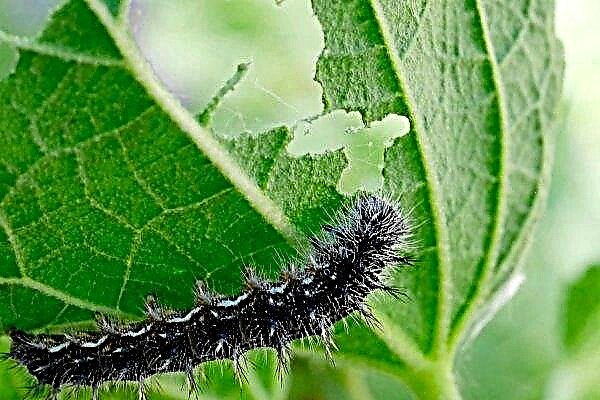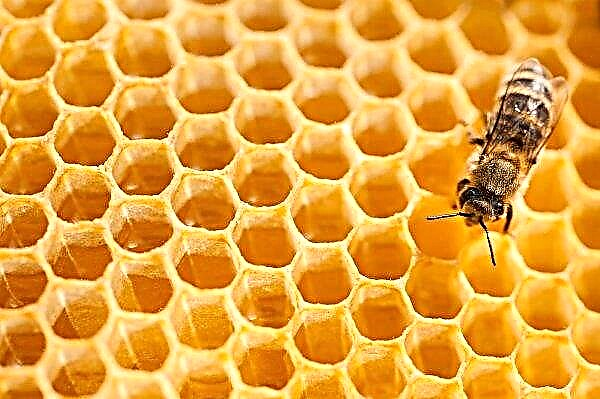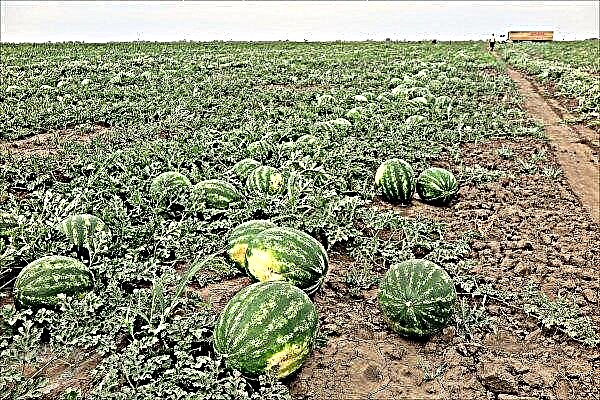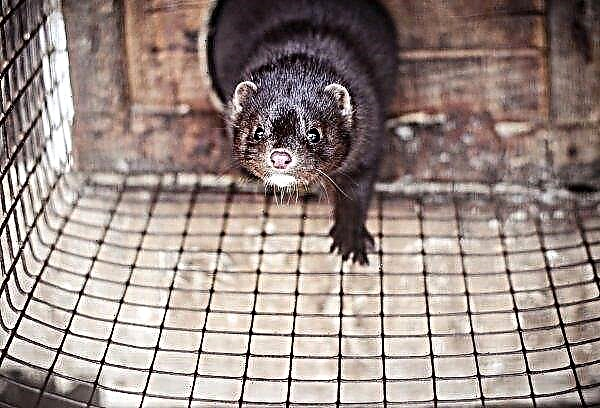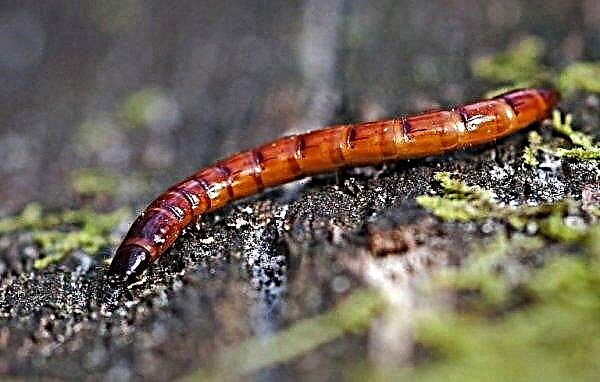Bees play an important role in human nature and life: participating in pollination of plants, they increase their productivity and vitality. About the reasons for the extinction of these insects and what are the ways to solve the problem, read below.
Important! An increase in the number of green spaces has a positive effect on the state of the atmosphere, increases the amount of oxygen necessary for the normal development and functioning of a person.
What role do bees play in the economy and human life?
Bees participate in cross-pollination of plants, which allows them to increase their productivity, and also contributes to their growth and landscaping. About 80% of the crops on earth are pollinated by insects. The income of agricultural workers from pollination of plants by bee colonies is 10-15 times higher than from the production of honey and wax.
When polluted by insects, the yield of various agricultural crops increases:
- buckwheat - by 50%;
- sunflower - by 60%;
- clover - up to 300%.

Why do bees around the world die out?
Extinction occurs due to the syndrome of destruction of bee colonies: this phenomenon is characterized by a sudden, one-time insect leaving the hive. The collapse of the colonies causes irreparable damage to the environment and crop production.
What happens to bees in this case has not been reliably established, but there are several versions of the extinction of the insect:
- ticks of varroa;
- the use of chemicals to treat pest fields;
- hypothermia of insects in severe frosts;
- Infectious disease rotten, which provokes rotting bee offspring.
Important! You can not use the same drug every year in the fight against ticks due to the development of immunity in the offspring of the pest.
Bee Enemies - Ticks
Especially dangerous for the population of the bee family is the tick of varroa, which is inhabited in the hives and sticks to adult bee individuals, feeding on their lymph. Ticks attracted by the smell of bee larvae before being sealed are populated in the comb for reproduction. The female is able to lay up to 7 eggs during the period of stay in the cell. The female is brown in color and oval in shape. On the bee's body, the pest is immediately noticeable: if you look closely, you can see the convex points of brown color. The male Varroa dies almost immediately after mating - it does not have a piercing-sucking mouth apparatus, therefore it is not adapted to life.
The female is brown in color and oval in shape. On the bee's body, the pest is immediately noticeable: if you look closely, you can see the convex points of brown color. The male Varroa dies almost immediately after mating - it does not have a piercing-sucking mouth apparatus, therefore it is not adapted to life.
Favorable conditions for the development of ticks in the hive:
- high humidity - 70%;
- temperature + 36 ° С.
As a result of the tick invasion, bee individuals weaken and degenerate. The offspring becomes small, his endurance is lost, and bees with wing defects and a reduced abdomen are also born. To understand the severity of the problem of the invasion of varroa ticks, it is necessary to visually assess the degree of damage to bees and the hive. After counting 20 pests, urgently apply tick control measures.
Did you know? For a day, an average bee colony is able to collect up to 10 kg of honey.
In the fight against it, the following groups of substances are used:
- organic acids;
- pyrethroids;
- essential oils;
- formalin.
Seasonal treatment against ticks:
- Spring treatment is carried out with the Apifit preparation in the amount of 1 plate, which is fixed between the honeycombs. When using formic acid, it is necessary to observe the temperature regime up to + 25 ° С - it is placed on the upper bar of the honeycomb. Formic acid evaporation is also useful for decay and wax moth prophylaxis.
- In summer, use a 10% mixture of dill oil (10 g) with petroleum jelly (90 g). The mixture is spread with a thin layer of 3 mm on 2 sheets of paper measuring 30 × 30 cm. The paper is laid out in a hive on the lower beam with the treatment layer up and on the upper beam down.
- In autumn, the final treatment against the pest takes place; for it, the Bipin preparation is used, which allows treating insects at a temperature of + 5 ° С. The drug is bred according to the instructions, depending on the number of hives to be processed. Processing bee colonies is carried out by pouring the prepared solution "Bipin" in the space between the frames.

Insecticides kill bee colonies
Every year, the anxiety of beekeepers about the disappearance of bee colonies from the face of the earth increases. Insects are increasingly affected by infection, ticks, have reduced immunity, they have a loss of orientation in space. Chemical damage to bees is one of the most common causes of extinction.
Recently, scientists have focused on the nicotine-based class of insecticides. Nicotine in nature is a natural defense against pests, but the substance cannot be selective and acts equally on the nervous system of both animals and insects. The effect of nicotine is expressed in systemic damage to nerve nodes and interruption of the signal of a nerve impulse. By synthesis of various substances, an insecticide of selective action - imidacloprid - was removed.
Did you know? To produce 1 kg of honey, a bee needs to fly around 8 million flowers.
According to pesticide manufacturers, the substance is harmless to honey bees. But tests of the substance in the fields of the USA and Italy have proved the detrimental effect of imidacloprid on the insect population. According to observations, it was found that the insect becomes disoriented and weakens, losing immunity to diseases.
The consequences of the extinction of bee colonies
Bees are an integral part of the ecosystem. Already today, scientists are exploring the possibility of increasing their viability and are deciding what will happen if they completely disappear. The forecasts are not at all comforting - when the bees disappear, parasitic insects begin to massively breed and the productivity of many plants that serve as a source of food for humans decreases. Along with the disappearance of the honey bee, humanity will lose one of the most unique and sought-after products on the market - this is honey, which is used in the food industry and cosmetology.
Along with the disappearance of the honey bee, humanity will lose one of the most unique and sought-after products on the market - this is honey, which is used in the food industry and cosmetology.
Cross-pollinated plants will cease to produce crops, which will significantly affect the economies of many countries. A person will not be able to enjoy the taste of more than half of the fruits and berries. If there are no bees, then no one will pollinate the cotton fields, which will affect the textile industry.
How to prevent the extinction of bees?
The solution to the problem of extinction of bee colonies was proposed by the Center for the Revival of Natural Beekeeping in Russia, where a program for the restoration of bee colonies was developed. According to beekeepers, the only sure way to save an insect from death is to return it to its habitat. Implementation of the plan will require 50 thousand beekeepers who will monitor their apiaries, consisting of at least 10 hives. The conditions for keeping insects in an apiary are a ban on the use of sugar and insecticides. According to the plan, annually for 16 years it is necessary to produce 70% of the swarm. After the plan is put into effect, according to the estimates of beekeepers, about 8 million colonies of bees should appear in the forests. High mortality among bee colonies is a global problem. Correct cultivation and minimization of the use of chemicals on sowing fields will help prevent the problem.
The conditions for keeping insects in an apiary are a ban on the use of sugar and insecticides. According to the plan, annually for 16 years it is necessary to produce 70% of the swarm. After the plan is put into effect, according to the estimates of beekeepers, about 8 million colonies of bees should appear in the forests. High mortality among bee colonies is a global problem. Correct cultivation and minimization of the use of chemicals on sowing fields will help prevent the problem.

